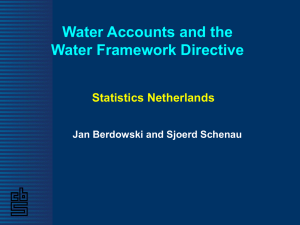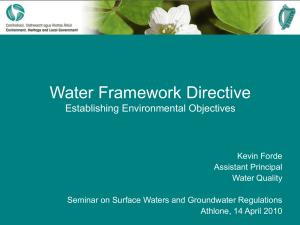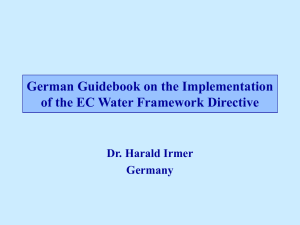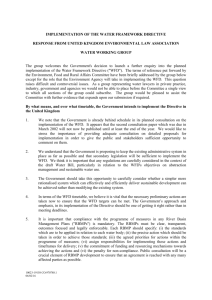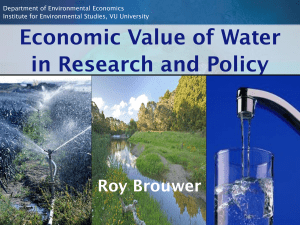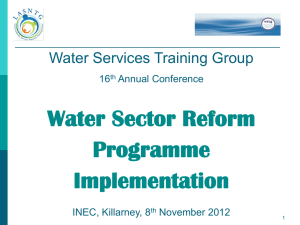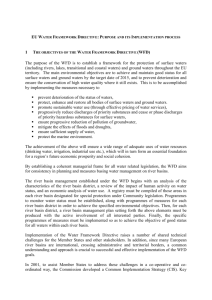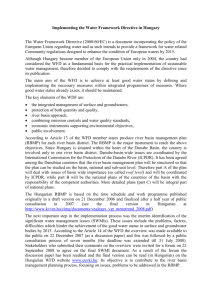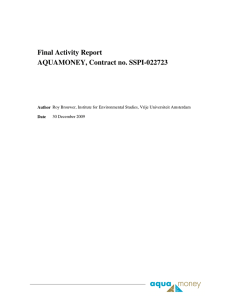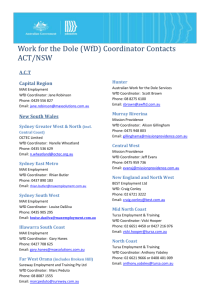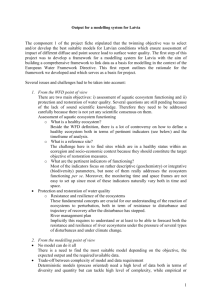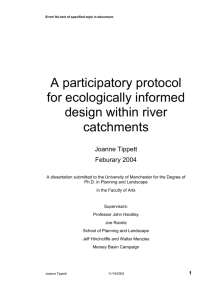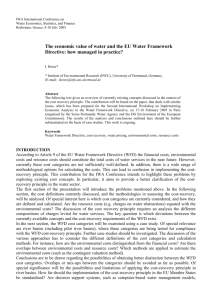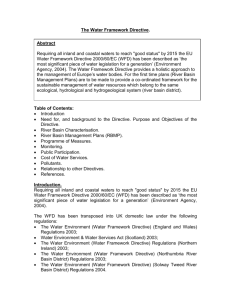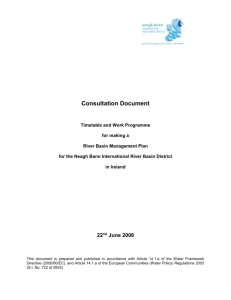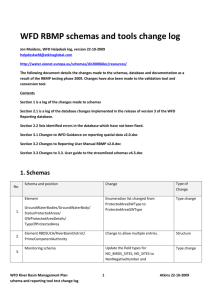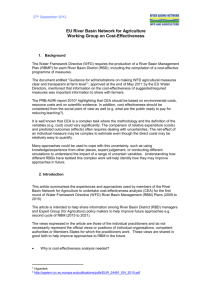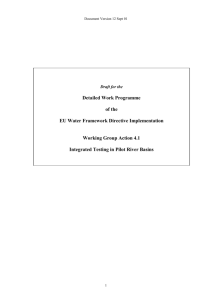Here - TRAP Project
advertisement
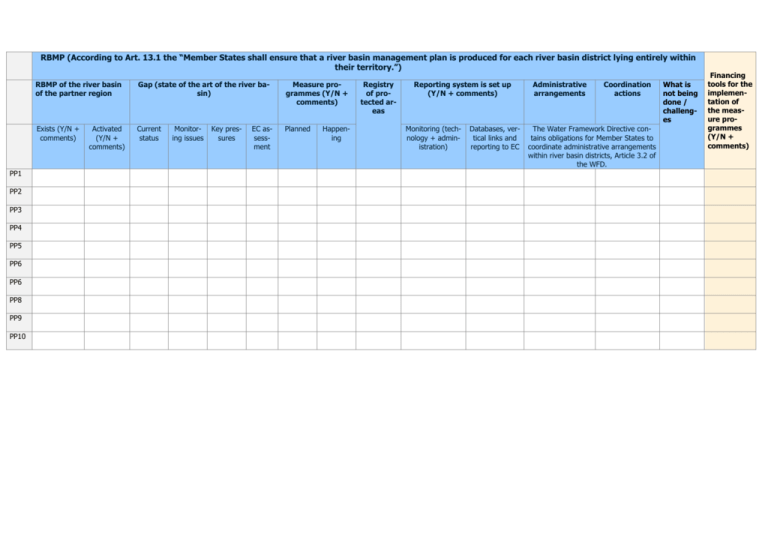
RBMP (According to Art. 13.1 the “Member States shall ensure that a river basin management plan is produced for each river basin district lying entirely within their territory.”) PP1 PP2 PP3 PP4 PP5 PP6 PP6 PP8 PP9 PP10 RBMP of the river basin of the partner region Gap (state of the art of the river basin) Measure programmes (Y/N + comments) Exists (Y/N + comments) Current status Planned Activated (Y/N + comments) Monitoring issues Key pressures EC assessment Happening Registry of protected areas Reporting system is set up (Y/N + comments) Monitoring (technology + administration) Databases, vertical links and reporting to EC Administrative arrangements Coordination actions The Water Framework Directive contains obligations for Member States to coordinate administrative arrangements within river basin districts, Article 3.2 of the WFD. What is not being done / challenges Financing tools for the implementation of the measure programmes (Y/N + comments) River Basin Management Plan of the partner region – text to support table Exists (Y/N) comments. Here all partners should answer yes, except for PP8, since none of the Greek RBMPs have been reported to the European Commission yet. Activated (Y/N) should explain whether the plan has begun to be operational, for example in terms of the programme of measures. Gap (state of the art of the river basin) These columns describe the current analysis of WFD status. So, current status should give the breakdown in terms of % of waterbodies, i.e. % in good ecological and good chemical status (separately), % in moderate status, % in poor status etc. This then represents the ‘gap’ to the ideal situation of 100% good status. Further details can be provided by breaking down the data into waterbody type (ground water, rivers, lakes, coastal and transitional). Monitoring Issues should capture any points regarding elements of WFD monitoring that have not been fully implemented, e.g. a particular biological element that has not been addressed or limitations with respect to monitoring of chemical status. Key Pressures, should identify the dominant reasons for poor (or less than good) status, for example, agricultural pollution, over-abstraction, industrial discharges etc. These should be clearly identified within the RBMP. EC assessment should capture the review points provided by the European Commission, for example, over-use and poor explanation of derogations, or limitations with the monitoring programme etc. Measure Programmes describes the measures identified to address each pressure and achieve good status. Also whether they are yet operational or simply in the planning (perhaps consultation stage). There is a close link here to the financial tools. Registry of Protected Areas refers to the fact that, for example, Natura2000 sites, drinking water protected areas, sensitive areas under the Urban Waste Water Treatment Directive etc all fall under WFD too, even if their original protection lies under an earlier or different Directive. This column should highlight whether such areas are recognized under WFD and what measures are in place to protect them. Reporting System requires information regarding administration of monitoring programmes (any outstanding technical issues can be addressed under ‘monitoring issues’), the method by which data is recorded and whether it is publicly available through e.g. websites. Also how the information is reported to the European Commission – through the WFD database? Administrative/Coordination actions requires some detail regarding administrative arrangements as outlined in article 3 of the WFD, including the identification of a competent authority for each River Basin District (RBD) and that programmes of measures are coordinated across the whole RBD. Where the RBD extends into the territory of another Member State, then that RBD is assigned as an international River Basin. What is not being done/Challenges – This section is especially to highlight issues where there is no obvious or easy solution, and/or where conflicts exist and trade-offs have to be found. Here then is the link to TRAP highlighting the particular regional needs and how TRAP can play a role. For example, if agriculture is highlighted as a key pressure but with no clear measure to address the problem without economic problems for farmers then perhaps 1 or 2 of the TRAP GPs can be of help. Financing tools for the implementation of measures should highlight the primary funding source. Comments on derogations due to cost effectiveness could be added here, so for example, combined sewer overflows are a major pressure on water bodies but addressing this issue is considered too expensive, or tackling agricultural pollution is not cost-effective. Innovative approaches such as paid ecosystem services could be highlighted here, or natural wastewater treatment technologies.
